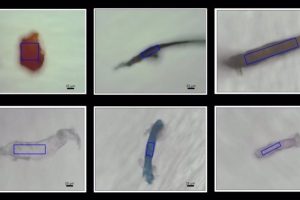Most of the energy needed by cells is generated in the mitochondria through a process coupled with electron transfer. During this process, electrons are transferred through macromolecular protein complexes in a sequential and orderly manner to allow the production of energy in the form of an ATP molecule, also known as energy currency.
It could be said that the protein complexes act as vehicles and infrastructure for the transport of electrons, which are the merchandise, to their destination.
In this way, the cell has at its disposal different mechanisms that allow expanding the functional diversity of proteins, modulating the function they carry out. Among these processes, phosphorylation stands out for its involvement in different neurodegenerative diseases, such as Alzheimer’s or Parkinson’s, and various types of cancer, and therefore it is crucial to continue research in this line.
Researchers from the Spanish National Research Council (CSIC) have participated in a study whose results reveal the role of phosphorylation (addition of a phosphate group to another molecule) in regulating long-distance electron transfer between proteins. The work lays the groundwork for understanding how energy-gathering processes readjust in response to changing cellular conditions and opens up new horizons in biosensor research for the detection of neurodegenerative diseases or various phosphorylation-related cancers.
Artist’s rendering of human cells. (Illustration: Amazings/NCYT)
This multidisciplinary study has made it possible to demonstrate that the transfer of electrons can occur over long distances (in the absence of physical contact and through the space between the proteins involved) through ionic channels established in the aqueous solution. “The ionic channel that is established between both proteins acts as a loading platform that allows electrons to travel from one protein to another without there being direct contact between them, similar to a conveyor belt, facilitating the process,” says Irene. Díaz Montero, CSIC researcher at the Chemical Research Institute (IIQ). The space (gap) between the proteins is lost or reduced when one of them is phosphorylated, causing the transfer of electrons to occur only when the macromolecules recognize and contact each other, that is, “the phosphorylation of one of the proteins involved prevents the unfolding of the conveyor belt, forcing both proteins to get closer so that the electrons can travel between them”, he adds.
The Institute for Bioengineering of Catalonia (IBEC), the University of Barcelona (UB), the Isla de la Cartuja Scientific Research Center, and the Center for Biomedical Research in Bioengineering, Biomaterials and Nanomedicine Networks (CIBERBBN) are also participating in the study. , in Spain.
The study is titled “Phosphorylation disrupts long-distance electron transport in cytochrome c”. And it has been published in the academic journal Nature Communications. (Source: CSIC)






![[Img #73881]](https://thelatestnews.world/wp-content/uploads/2024/09/How-to-Choose-the-Perfect-Tablet-for-Your-Needs-150x150.jpg)



![[Img #67653]](https://thelatestnews.world/wp-content/uploads/2023/01/Scientists-discover-how-cells-regulate-their-power-plants.jpg)
![[Img #73881]](https://thelatestnews.world/wp-content/uploads/2024/09/How-to-Choose-the-Perfect-Tablet-for-Your-Needs-300x200.jpg)
